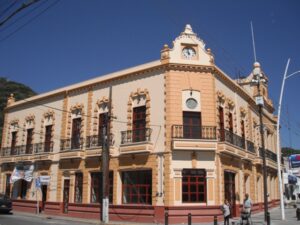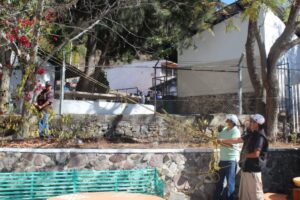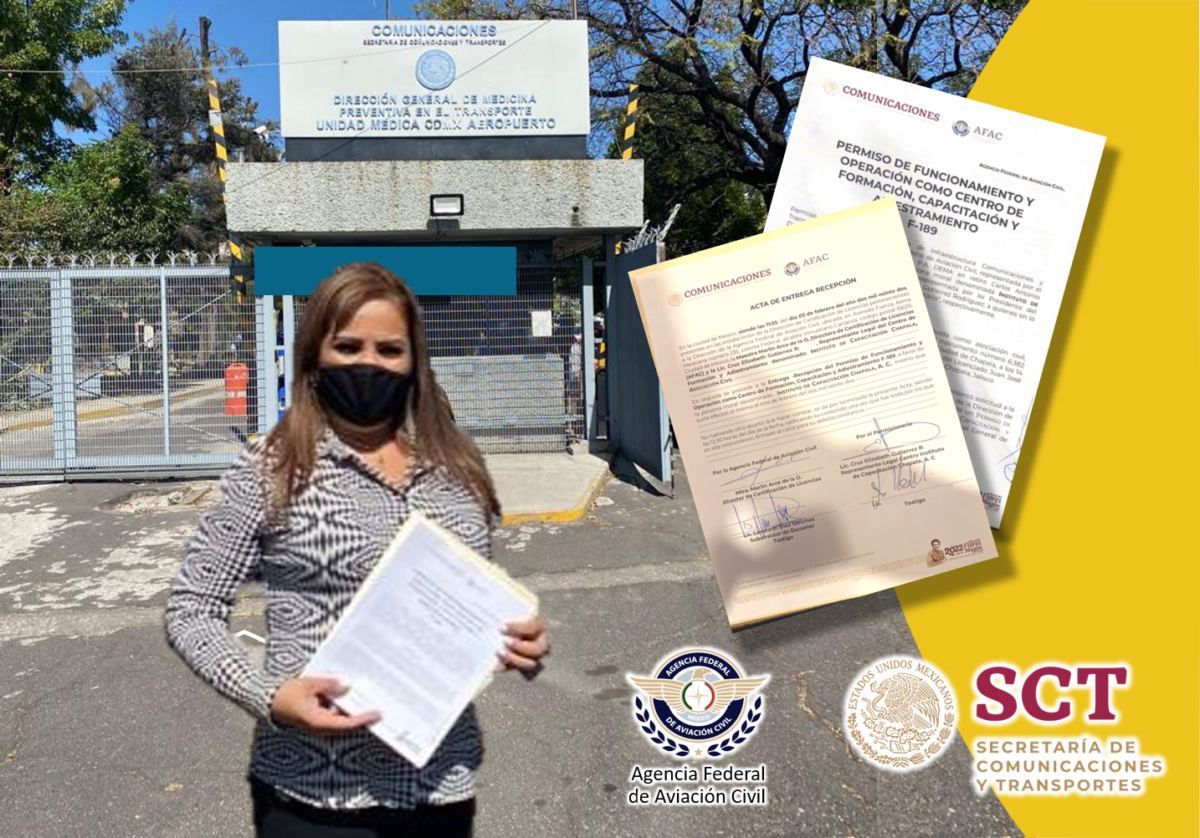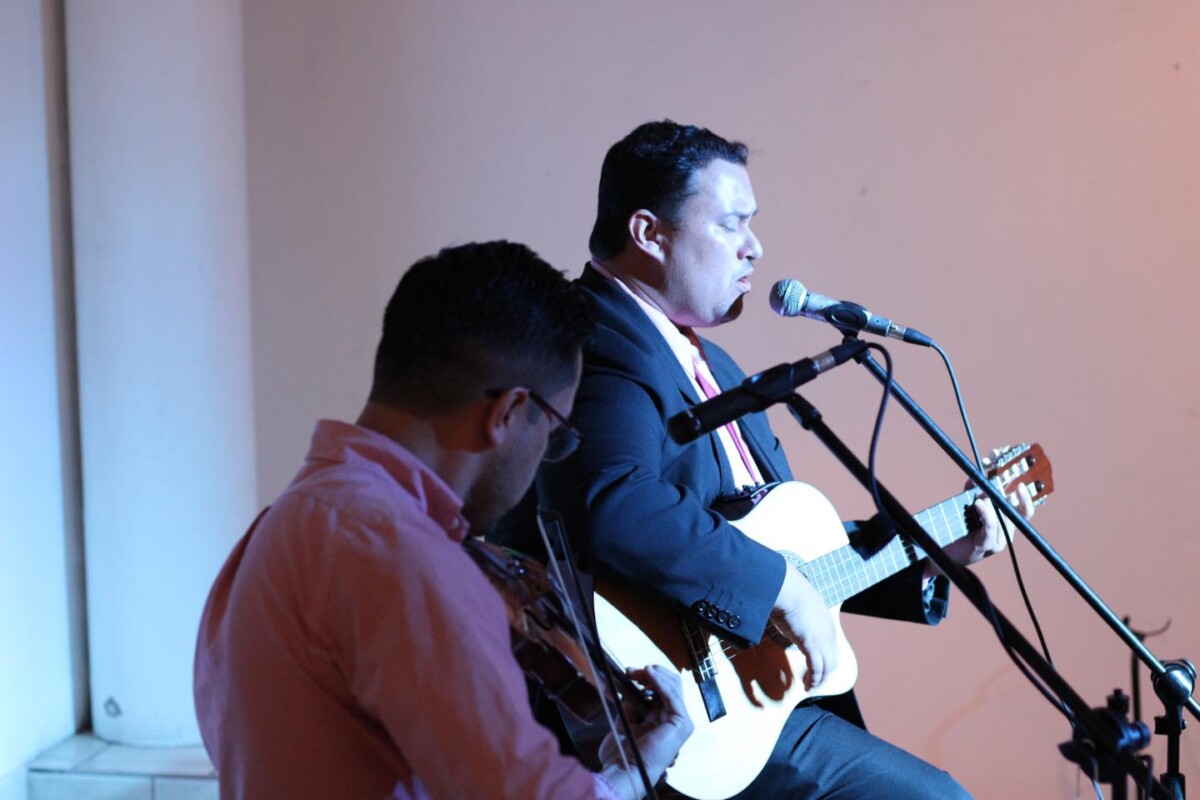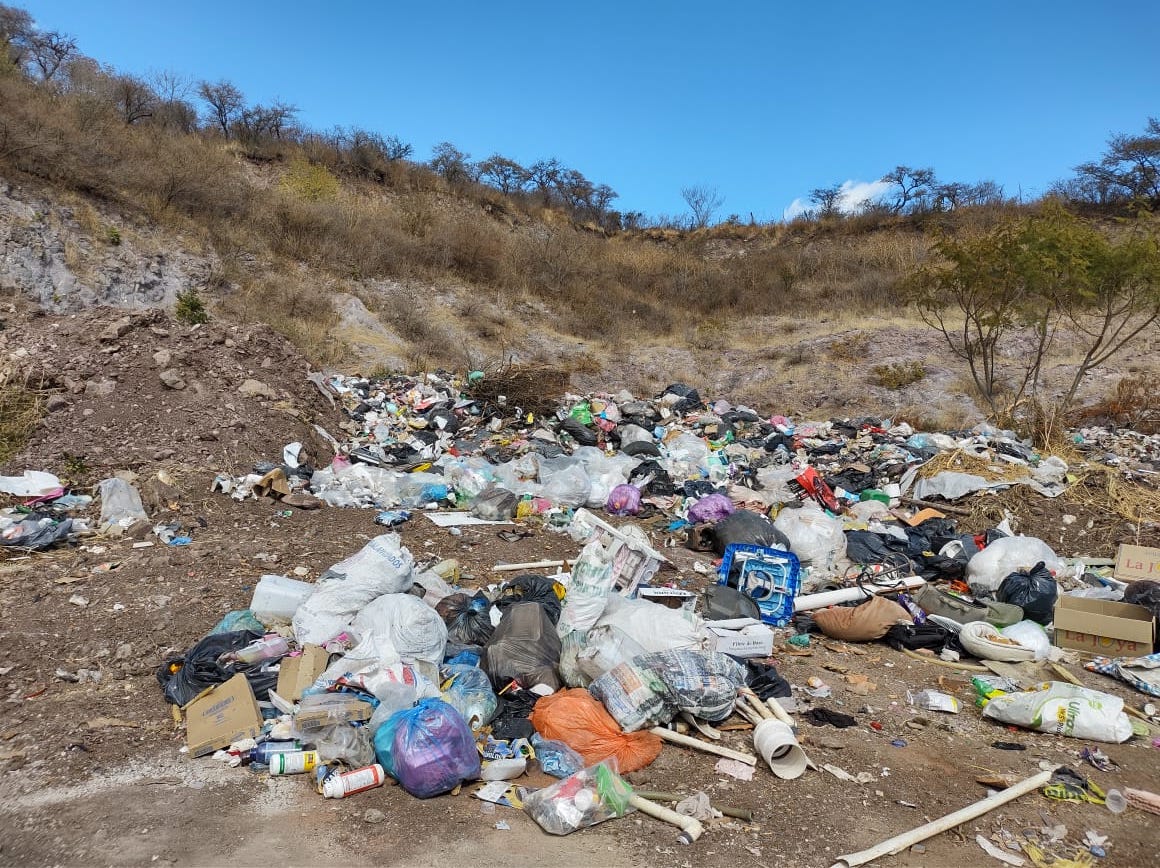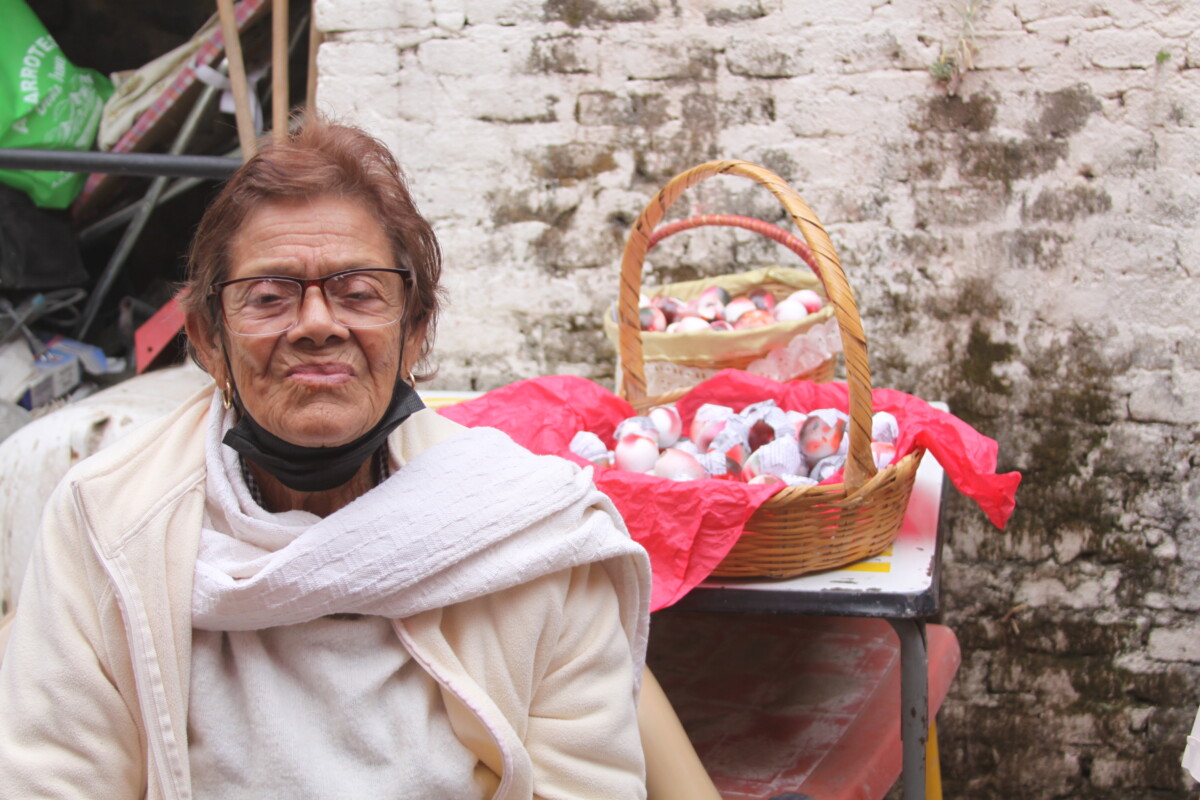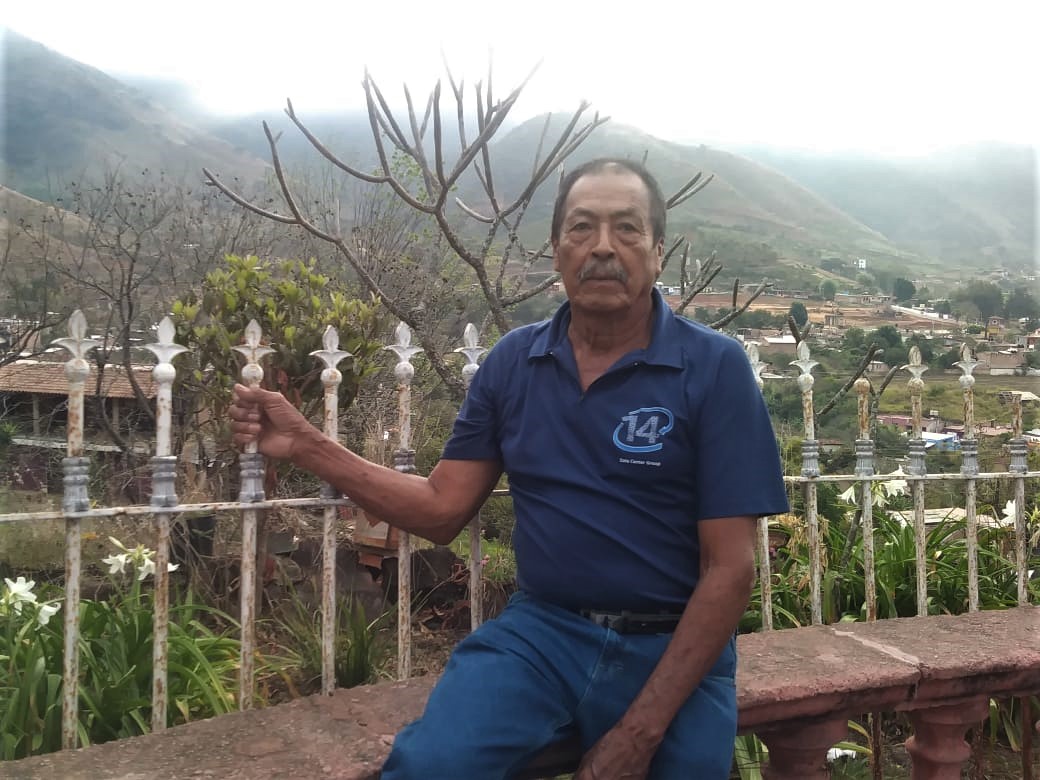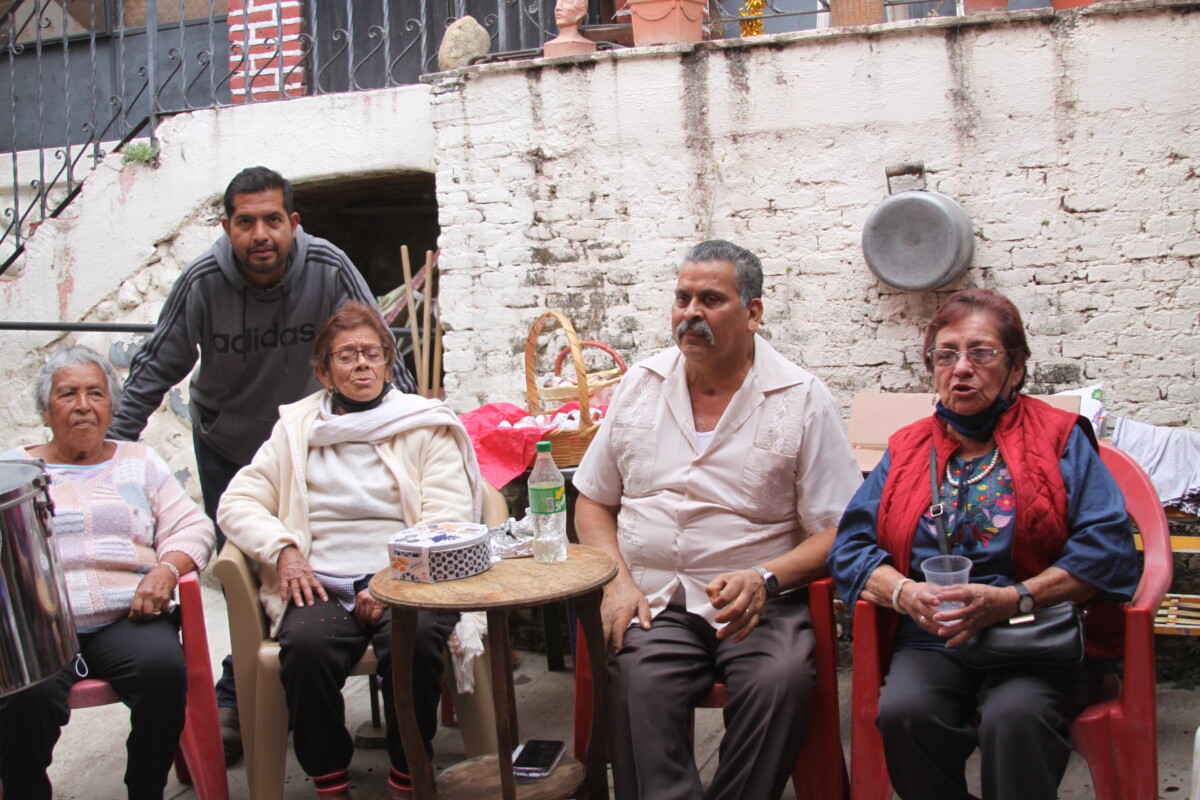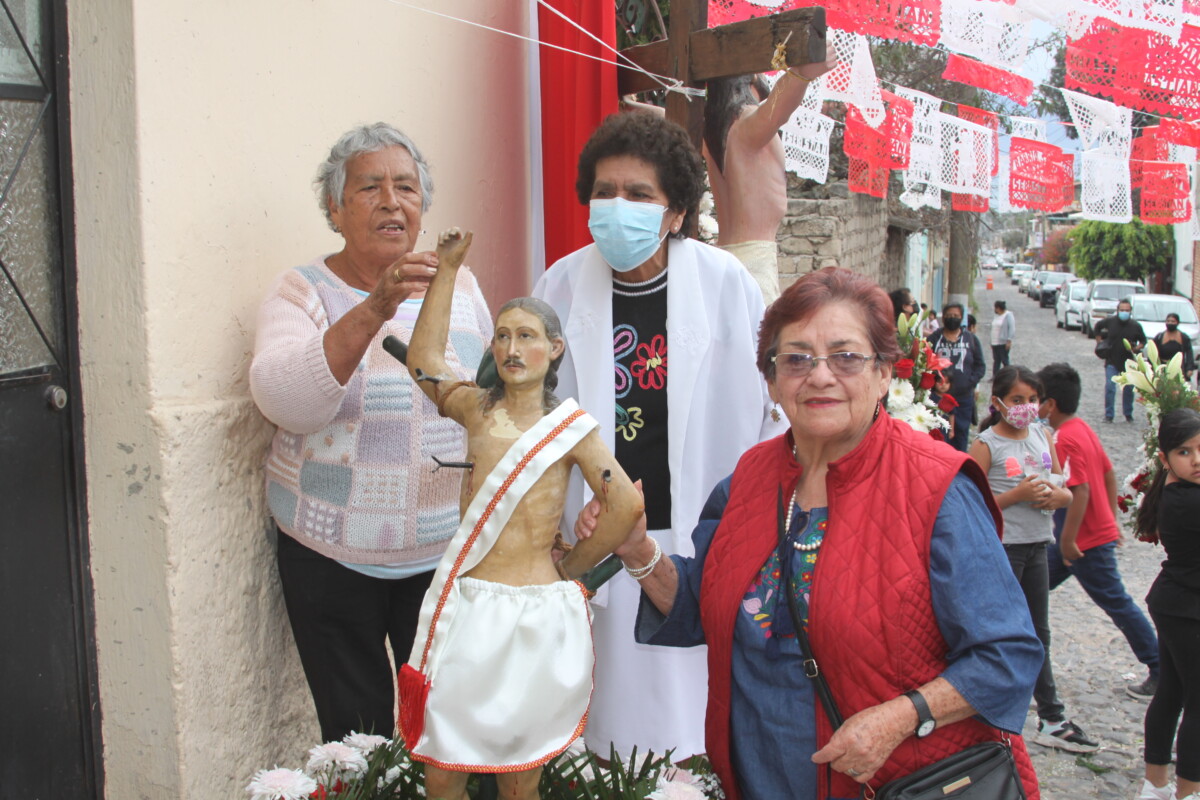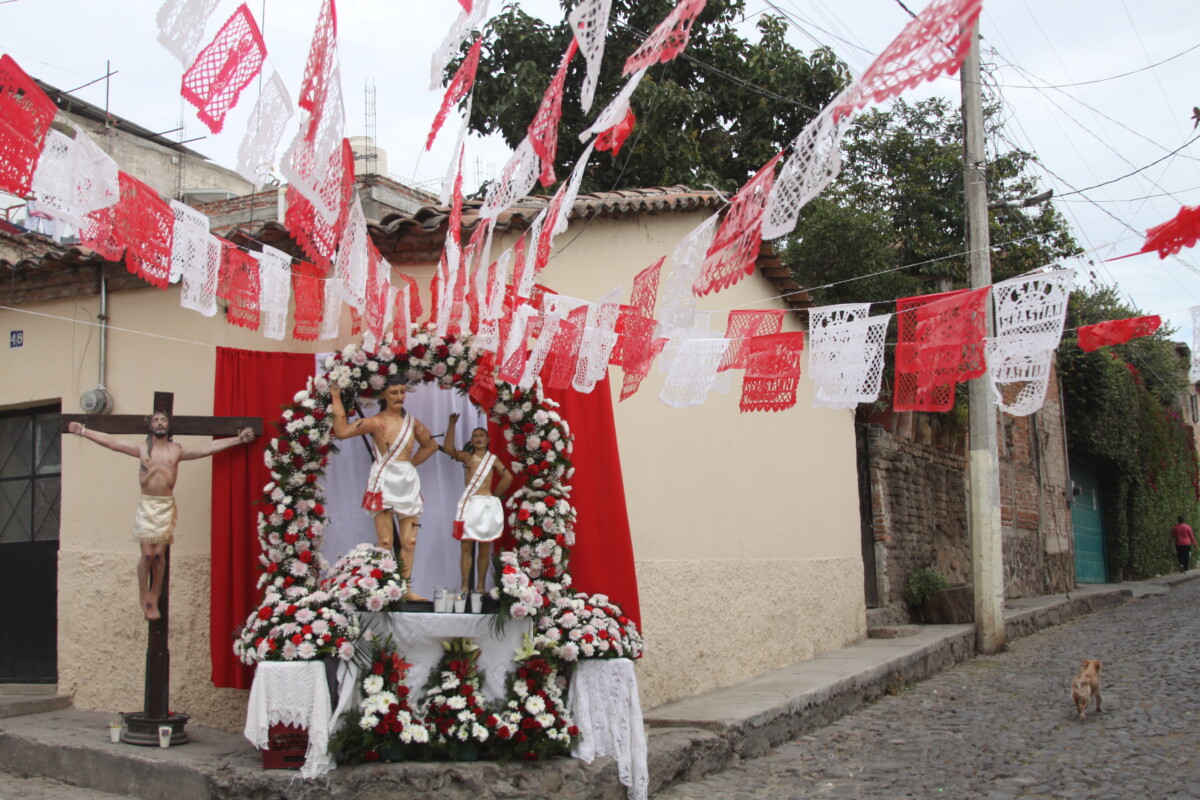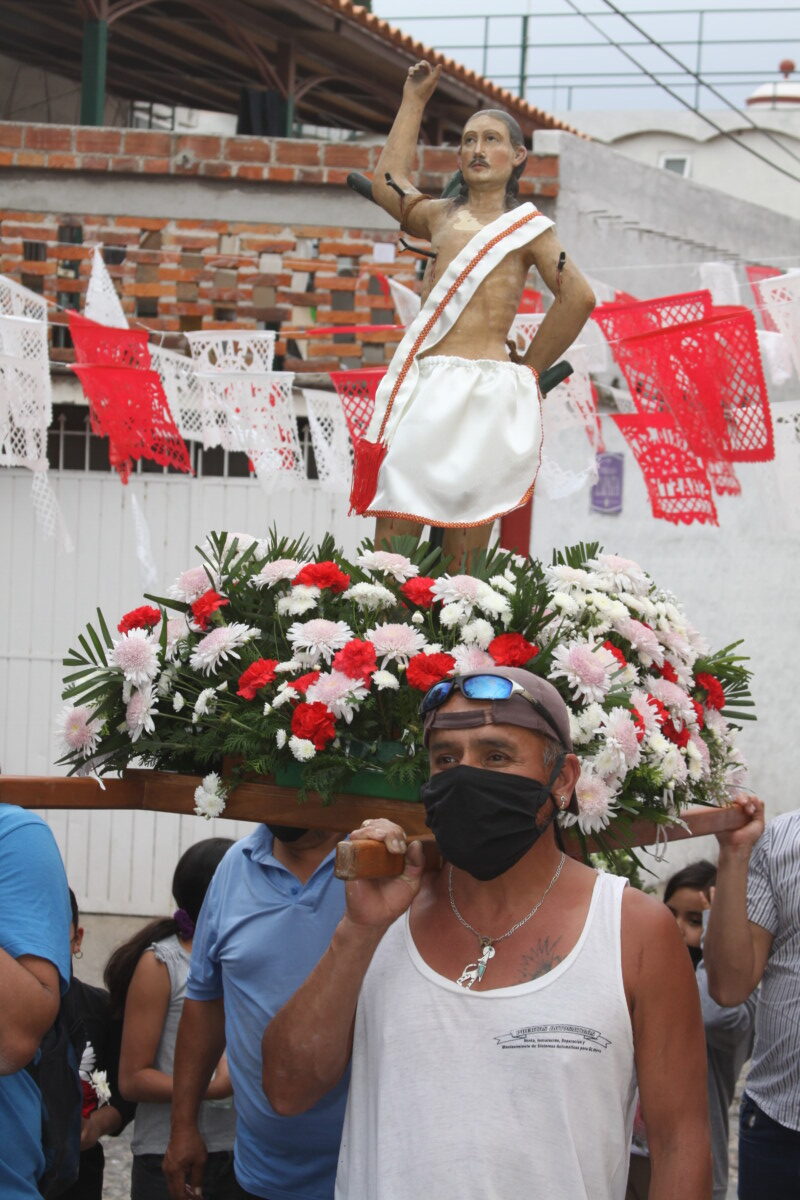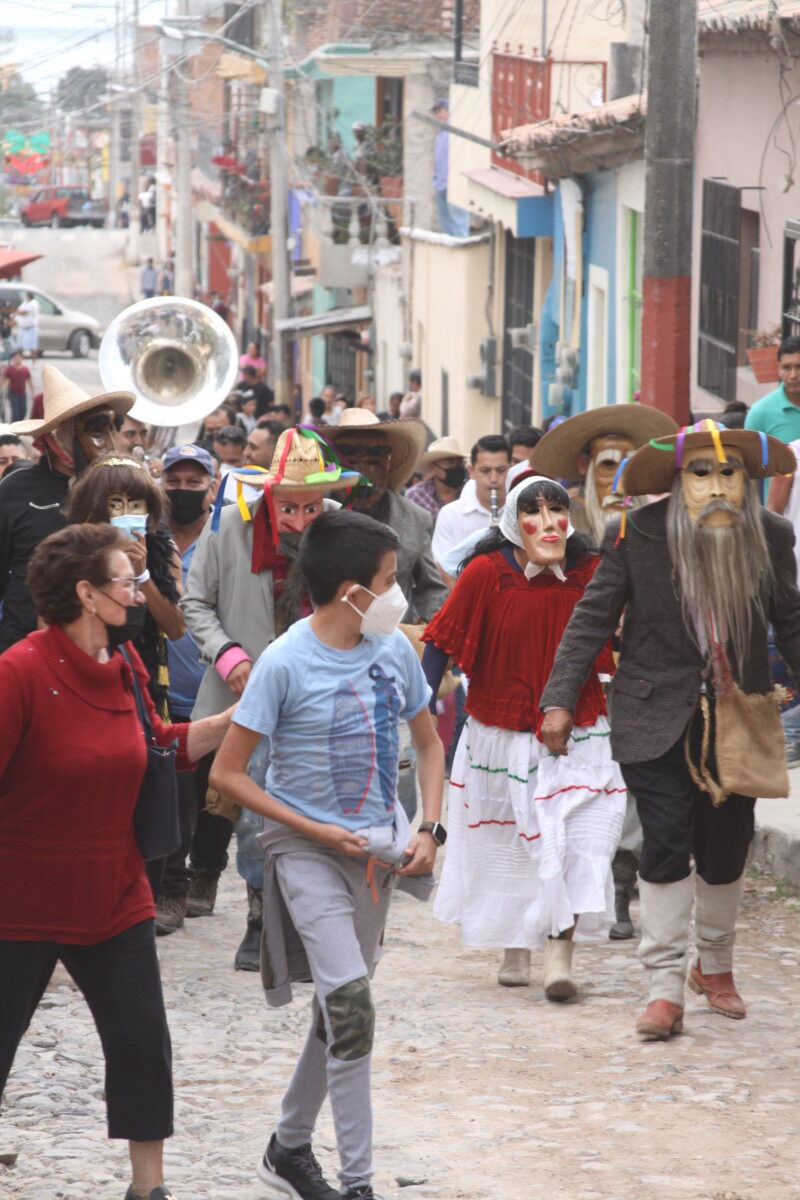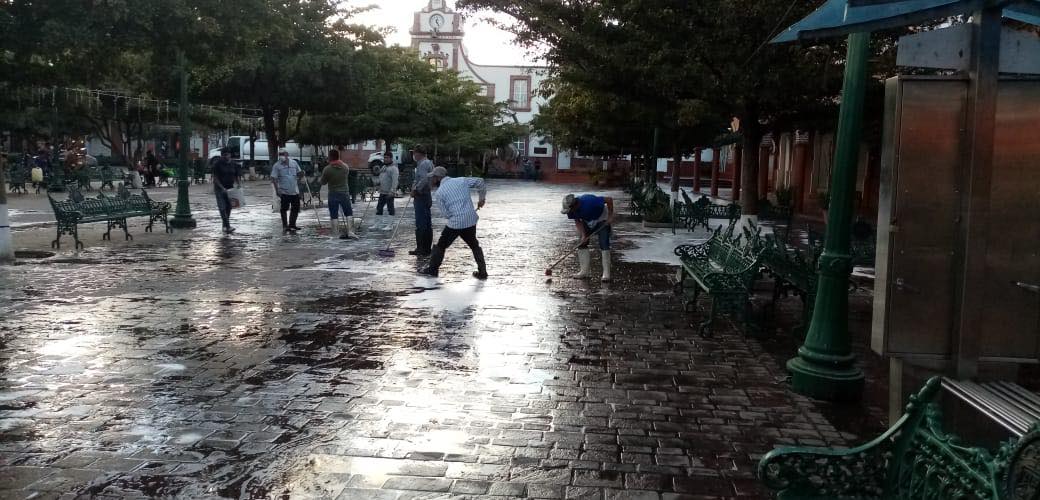eventos
Presenta Chapala el programa del Carnaval 2022
El Lienzo Charro J. Jesús González Gallo será la única sede del Carnaval de Chapala en su edición 2022. Foto: wikimedia.
Redacción.- Chapala echará la casa por la ventana. El Carnaval Chapala 2022 ya está aquí y Semanario Laguna te comparte el cartel de actividades que se realizarán en su única sede, el Lienzo Charro J. Jesús González Gallo, donde destacan presentaciones de la Banda el Pueblito en su día de apertura el 25 de marzo o la del cartel del cierre para el primero de marzo con la Banda Agua de la Llave, Banda la Incontenible, Banda Astilleros, Banda Nueva Casta y Banda La Pequeña.
Este año, regresa también el certamen y coronación de la Reina de Carnaval que no se realizaba desde el 2020 a consecuencia de la pandemia por coronavirus y la alta incidencia de contagios.
A continuación, te compartimos el cartel de los bailes, actividades, así como sus costos.
CARNAVAL CHAPALA 2022 DEL 25 DE FEBRERO AL 1 DE MARZO
Lienzo Charro “J. Jesús González Gallo” en Chapala, Jal. A partir de las 4:00 pm Niños Menores de 10 años entran Gratis.
>>> VIERNES 25 DE FEBRERO <<<
* Entierro del Mal Humor 12 pm
Banda El Pueblito
Banda Perla Azul
Toros de la ganadería de Neto Díaz *
Certamen y Coronación de la Reina de Carnaval, ameniza música de mariachi. 8 pm
Preventa especial los primeros 500 boletos a $100 pesos
Preventa normal $130 pesos Taquilla un poco más.
Habrá zona VIP teléfono 3322029359
>>> SÁBADO 26 DE FEBRERO <<<
Jaripeo Baile Julio Preciado
Mi Banda El Mexicano de Germán Román
Grupo Imperio
Banda Loma Santa
Toros Los Intocables de los Hnos. Gómez.
Preventa especial los 500 primeros boletos $250 pesos
Preventa normal $300 pesos
Taquilla un poco más.
Habrá zona VIP teléfono 3322029359
>>> DOMINGO 27 DE FEBRERO <<<
Banda Agua de la Llave
Banda la Ancontenible
Banda Astilleros
BANDA Nueva Casta
BANDA la Pequeña
Toros los explosivos de Raúl De La Torre
Preventa especial los 500 primeros boletos $200 pesos
Preventa normal $250 pesos Taquilla un poco más.
Habrá zona VIP teléfono 3322029359
>>> LUNES 28 DE FEBRERO <<<
Banda la fugitiva
Banda caña Verde
Banda la masiva
Toros Rancho San Lorenzo
Preventa especial los primeros 500 boletos $100 pesos
Preventa normal $130 pesos
Taquilla un poco más.
Habrá zona VIP teléfono 3322029359
>>> MARTES 01 DE MARZO <<<
Cierre de Carnaval
Jorge Medina
Virlan García
Banda San Miguel
La Colegiala
Preventa especial los primeros 500 boletos $300 pesos
Preventa normal $350 pesos
Taquilla un poco más.
Habrá zona VIP teléfono 3322029359
San Juan Cosalá will hold the fifteenth “Artistic Marathon” this month
The Artistic Marathon will once again be held in the San Juan square.
Héctor Ruiz Mejía (Jocotepec).- The 15th edition of the San Juan Cosalá Artistic Marathon will be held in the municipality of Jocotepec. Its purpose is to help pay the medical expenses of people from the community with chronic illnesses.
The charity event will take place in the Main Square of San Juan Cosalá on Saturday, February 20th. This year, the event will benefit eleven people suffering from different types of diseases such as cancer, leukemia and kidney failure. The proceeds will help these people pay for their medical treatments.
One recipient is Mónica Garcia, one of this year’s beneficiaries, who has been suffering from kidney failure for some time which has kept her bedridden making it increasingly difficult to pay for her treatment.
Enrique Rodríguez Zamora, general coordinator of the event, shared that the line-up of artists that will participate in the 15th event has not yet been confirmed, but the eleven booths where a great variety of food is usually offered for sale are already lined up.
The organizer expects the attendance to exceed 500 participants, between locals and visitors.The goal is to raise 300,000 pesos, which will be distributed among the eleven people selected this year.
«The truth is that after last year’s event was postponed due to the coronavirus, this year we can feel and see the enthusiasm of the people to participate,” said Rodríguez Zamora.
Rodríguez Zamora invited the community to attend the event, since the sole purpose of this non-profit association is to help those who need it most.
Translated by Colleen Beery
Events calendar
The Centro Cultural Antigua Presidencia (CCAP) in Chapala will host various artistic activities this week.
Wednesday, February 16
Event: Piñata Classes. Ajijic Delegation invites you
Description: Registration on Wednesday, February 16
Place: Ajijic plaza in front of the Centro Cultural de Ajijic (CCA), where you will be given information on how to participate
Cost: $15 pesos per class
Saturday February 19 and Sunday February 20
Event: Theatrical improvisation workshop
Schedule: From 10:00 am to 1:00 pm
Description: If you like theater and want to take classes this is your chance
Place: Cultural Center Antigua Presidencia, Madero 226, Chapala
Cost: Free activity. Information and registration: 37 6765 2017
February 21, 22 and 23
Event: Workshop on Cultural Project Development
Schedule: From 9:00 to 12:00
Description: Learn how to make and manage resources for your cultural projects
Place: Centro Cultural Antigua Presidencia de Chapala, Madero 226, Chapala
Cost:
Registration and Information: 33 1769 7365 / lapinedo@yahoo.com Luis Pinedo
Chapala residents win 5K wheelchair races in Michoacán
Mayte González and Ernesto López after winning the 5k competition in the neighboring state of Michoacán
Jazmín Stengel (Chapala).- María Mayte González Rentería and Ernesto «Tito» López González from Club Guepardos or “Cheeta Club,” each took first place in the five kilometer «6th Athletic Race in Honor of San José Sánchez del Río,» in Sahuayo, Michoacán on February 6.
Mayte González, 14 years old, reached the finish line in 22 minutes and 14 seconds, beating national level athletes such as Guadalupe Magallón Córdova by almost four minutes. Magallón Córdova placed second with a 26:06 time, with Cecilia Córdova Hernández close on her heels with a third place finish of 26:11.
Although young María Mayte is only 14 years old, she has already been on the podium in state competitions; last year she won the 2,000 meters and came in second place in the 1,500 meters. «She had an exceptional performance,» commented her coach López González, who also recognized her as the only athlete who has lasted since the founding of Club Guepardos. López González said that he hoped that Mayte González can begin intense training and climb to the top levels of national athletics in 2022.
Tito López, founder of Club Guepardos and now a coach and member of the Chapala Inclusive Team, took first place in the general wheelchair discipline in the men’s free category with a time of 18 minutes and 45 seconds.
Translated by MaryAnne Marble
What if a tree might fall? Here is what to do
Delegation personnel trimming and shoring up trees at Francisco Márquez Elementary School/Irene Robledo. Photo: Sofía Medeles.
Sofía Medeles (Ajijic).- In the past few weeks several trees in Ajijic have been reported at risk of falling due to strong winds so the acting delegate, Maximiliano Macías Arceo, explained how to report these cases.
If you see a fallen tree, Macías Arceo said you should report it to the Civil Protection and Fire Department of Chapala at 376 766-3615.
However, if the tree looks like it might be dangerous, contact the appropriate delegation for an evaluation. Delegation personnel will decide whether to take action or report it to the Department of Ecology, who in turn will work with the Parks and Gardens Department to take proper action.
To report a tree at any time of day, you can call 333 490-0382. To report through the Ajijic delegation the number is 376 766-1760, from 9 am to 3 pm.
Translated by Mike Rogers
Certifica la AFAC y SCT la carrera de Sobrecargo de Aviación del Octavio Paz
La rectora del CUOP, Elizabeth Gutiérrez, con el permiso de funcionamiento y operación como centro de capacitación y adiestramiento en Sobrecargo de Aviación afuera de las oficinas de SCT.
Redacción. – La carrera de Sobrecargo de Aviación que imparte el Campus Universitario Octavio Paz (CUOP) fue certificada y reconocida por la Agencia Federal de Aviación Civil (AFAC) y Secretaría de Comunicaciones y Transporte (SCT).
La rectora del CUOP, Elizabeth Gutiérrez recibió el permiso de funcionamiento y operación como centro de capacitación y adiestramiento F-189, en áreas de la aeronáutica, para personal aéreo, especializándose en Sobrecargo de Aviación, de manos de la Directora de Certificación de licencia de la AFAC, Marlín Arce de la O.
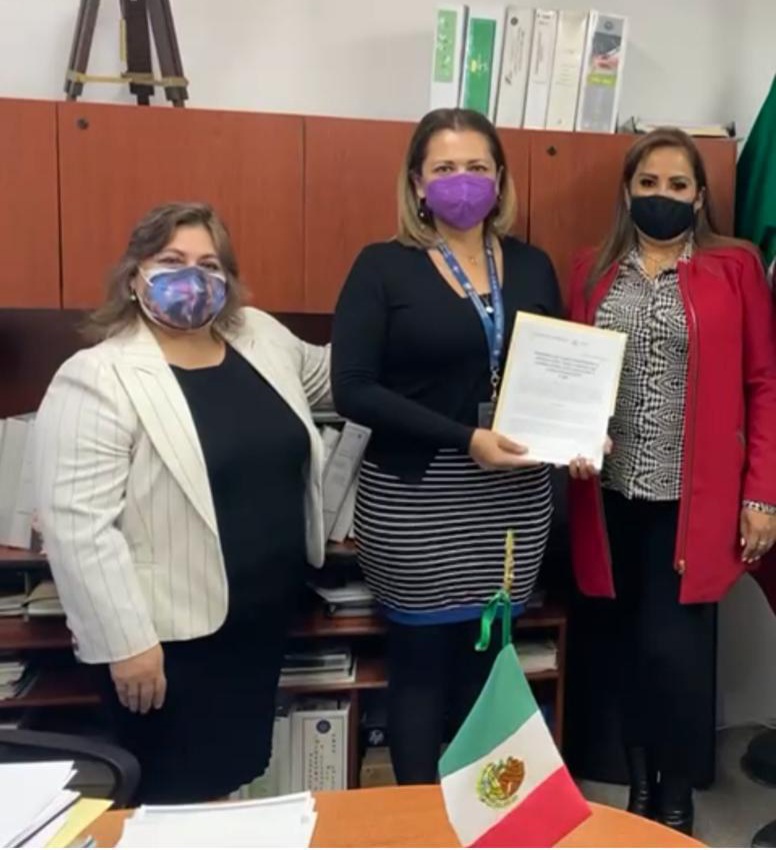
La rectora del CUOP, Elizabeth Gutiérrez y la Directora de Certificación de licencia de la AFAC, Marlín Arce de la O durante la firma de la certificación.
“De esta forma el CUOP, se consolida como la institución educativa en la Ribera de Chapala con el mayor número de reconocimientos oficiales para la impartición de educación en diversos niveles y cursos académico”, compartió la institución educativa a través de sus redes sociales.
Juan José Ramírez Campos highlights his 20-year career with music
Ramirez Campos performing. Photo: Héctor Ruíz
Héctor Ruíz.– To mark his 20-year career as a singer-songwriter, Juan José Ramírez Campos, who is also known for serving as trustee and twice interim president in the past administration (2018-2021), appeared on January 28 at the Casa de la Cultura José Vaca Flores in Jocotepec, where he performed his most popular songs, such as Jocotepec Mágico.
Translated by Rebecca Zittle
Señor del Monte festivities generate 25 extra tons of garbage
There is at least 40 tons of garbage generated daily by the municipality of Jocotepec. Photo: Archive.
Héctor Ruiz Mejía.- A total of 25 tons of garbage was generated during the patron saint festivities in honor of the Señor del Monte in the municipality of Jocotepec.
According to municipal authorities an additional two tons of waste was accumulated each day of the festivities, not counting the 40 tons that the municipality generates daily.
This represents that a single person in Jocotepec generates around one kilo of garbage per day, a worrying situation due to the collapse of the municipality’s garbage collection service.
It is unknown how much effort City Hall made to get rid of the extra 25 tons of garbage accumulated by the festivities. Residents in distant neighborhoods were upset by the delays in their collection services. «They only picked up the garbage from the downtown area, to make it look nice, but around here we have been well abandoned,» commented one of the neighbors from a remote area of the city.
Although it has not yet been confirmed, users who travel daily along the highway that connects to the Guadalajara-Morelia highway, assured that at least a ton of garbage was dumped in a clandestine manner.
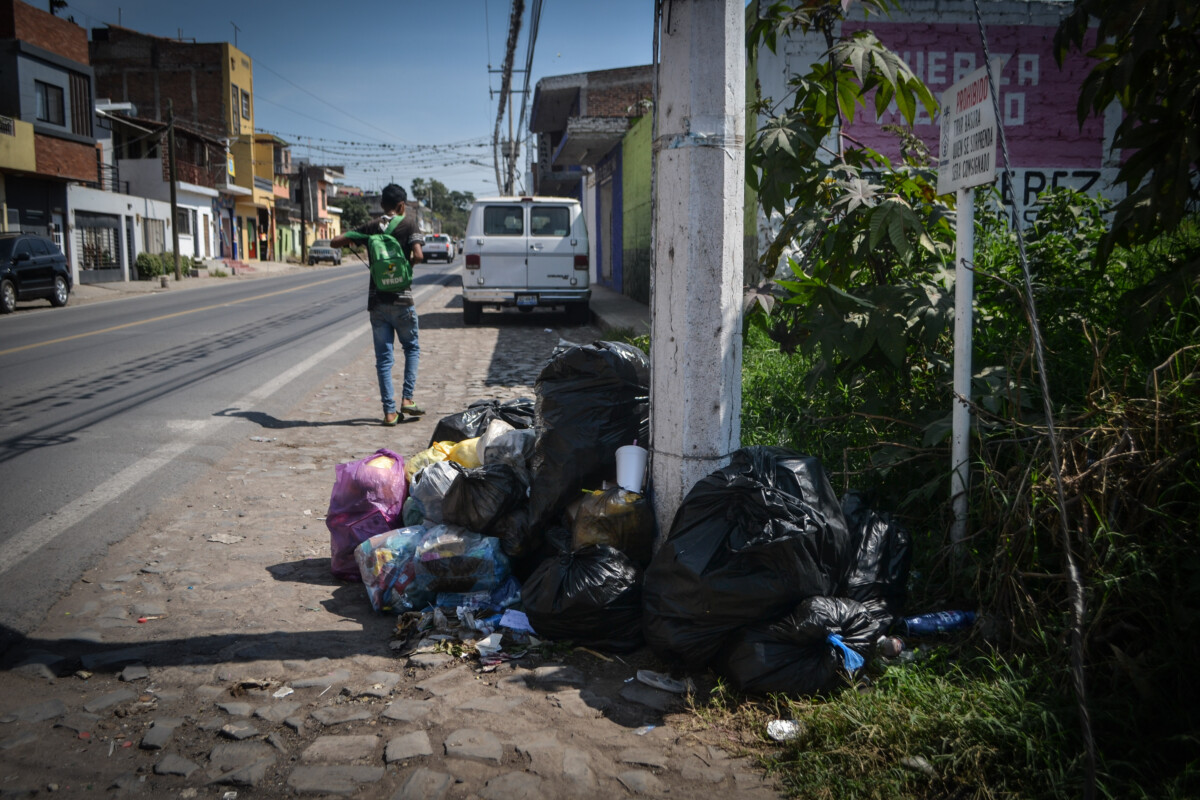
The 13 days of festivities for the Señor del Monte, generated 25 extra tons of garbage. Photo: Archive.
«It is clear to us that they are using this space as a provisional dump, but we are not sure if it is legal or not», explained one of the passers-by, who preferred to keep his name anonymous.
Although this newspaper requested information regarding the situation of the «clandestine» landfill, the City Council has not yet confirmed whether they have the corresponding permits to use this space.
This new dump is located approximately 60 meters before taking the Jocotepec freeway and the users themselves said that the garbage is «dumped there in plain view of anyone passing by».
So far, the fate of the garbage generated by the festivities is unknown. Residents of the municipality, such as «Conchita», have expressed concern about the sanitary situation and have had bins waiting to be picked up for days or even weeks.
Translated by Christalle Dalsted
Lakeside Chronicles: The feast of San Sebastian
Doña Irene prepared the eggshells with confetti weeks before
María del Refugio Reynozo Medina (Ajijic) – January 20 is the most awaited day for the devotees of San Sebastian.
Doña Irene is 82 years old. As a child, she accompanied her parents to the celebration of San Sebastian. She has lines of time on her face; most of them are hints of a smile, because Doña Irene smiles a lot. Her chatter is a contagious melody. She welcomes the visitor as if she had seen him yesterday and as if she already knew him. “Let’s have a little refreshment,» she says. Her conversation invites you to stay and contemplate the afternoon by the cobblestone street.
Although now it is not like other years, she is looking forward to the feast of San Sebastian with joy and she is providing almost 30 chickens for the mole.
Irene Martínez Cervantes lives in the San Sebastián neighborhood in Ajijic.
She remembers her parents’ veneration for the patron saint San Sebastian, whom they celebrated every year on January 20. Her family used to organize this celebration and she decided to continue it, despite the Covid-19 pandemic restrictions.
Seventy-five-year-old Don Antonio Arceo, another of the organizers, follows the tradition of his ancestors. He remembers that in the past, the sponsor of the festival was by invitation.
Two or three months before the festival, those who had been in charge the previous year would select another person to continue the tradition. The previous organizers would visit the new person, bringing a carafe of tamarind or pomegranate punch as a gift. They would bury the tightly closed punch for up to two months and add pieces of quince when it was unburied. When the drink was ready, the new sponsor agreed to assume the responsibility of covering the expenses of the drink, the food, the music and the tachihual bread (a traditional bread loaf). The new sponsor recruited ten to twelve people to help him. The following year he would make the same invitation to another acquaintance.
A handshake, a shared drink of punch and a word as a guarantee was enough to close the commitment. So says the song that is engraved in the memory of the faithful, by dint of repeating it every year during music and confetti.
This charge I give them
to those who remain.
So that they never forget it
and that they pay for it.
Weeks before January 20, Doña Irene starts to paint eggshells and fills them with confetti for the papaqui (the throwing of eggshells and confetti to the rhythm of the song of San Sebastian) That is why one of the mischievous stanzas says:
Poor San Sebastian
who never knew underpants.
The first ones he bought
he exchanged them for eggshells.
On the day of the procession Doña Irene is sitting inside the courtyard with some of her co-workers and close friends. She watches with pleasure the parade of men, women and children who come for the plates of food. Women and children carry towers of plates of mole, beans and rice to their homes. Some men take their rations and packages of tortillas to eat sitting on the sidewalks.
At the corner of Emiliano Zapata and Marcos Castellanos streets sits the altar to San Sebastian. There are two figures. The smaller one measuring approximately one meter and brought from the church the previous day. The other is one about a meter and a half that Doña Irene had sculpted. They are in the middle of a large arch of red carnations and chrysanthemums, on a table covered with white tablecloths.
“There are few people now,» says one of the attendants. Before the pandemic, food was served at tables set up along the street, and casseroles with rice and mole accompanied the procession.
Music has been playing since last night at San Sebastian. Not just one band, «it’s a group,» a young man tells me. Members of different bands come to play for the patron saint.
One woman and seven men make up the cast to liven up the procession. After three o’clock in the afternoon, they begin to prepare the small wooden platform where the smallest sculpture of San Sebastian, loaned from the parish, will be placed. He has starred in the festival for as long as they can remember.
Saint Sebastian is shown with one arm backwards tied to a pole and the other bent towards the heavens. His right index finger is missing. He has a taciturn look, curly shoulder-length hair, a mustache, thin outlined eyebrows and a cracked chest and arm. Five arrows are embedded in his body, which, according to the history of the saints, recall the rain of arrows he received in his martyrdom.
Doña Irene approaches with her companions to see him off, they surround him and talk in his ear, because he will not visit them again until next year. Little by little about 50 people arrive. The band begins to play. Suddenly the first sayaco (traditional, cross-dressing, masked characters who throw confetti or flour) appears wearing a work shirt, khaki colored jacket, boots, hat, and a backpack. He wears a long raw-colored wooden mask, from his cheeks emerges a long beard, bushy eyebrows and a straw-colored mustache.
Six more sayacos arrive dressed as exotic women. One of them, aided by a pair of balloons, shows off her bulging breasts under a flowered blouse. Another wears a blouse of gold and black threads with a tiara of sequins. The youngest sayaco looks like a teenaged girl wearing a scarf over her crimson-plated mask and a black dress edged with blue lace. She stomps her booties on the uneven streets.
The sayacos lead the procession dancing and waving their circular skirts non-stop, followed by the band. The sculpture of San Sebastian follows, carried on the shoulders of four men. As it passes through the elementary school, the students come out to watch through the entrance gate. The sayacos bring their masks close to the gate while the little ones laugh.
San Sebastian is returned to the parish amidst cheers and applause. The sayacos do not enter the temple and they wait outside to return in procession with the music of the band.
Now the Sayacos are the absolute masters of the parade, they take out fists of confetti from their backpacks to throw at the women. Up on a balcony a little girl hides between her mother’s legs, a sayaco jumps to scare her, the little girl cries and the woman laughs and hugs her. A group of about 30 children taunt the sayacos, run and urge them to chase them. Upon their arrival in the heart of the neighborhood outside Doña Irene’s house, the music continues to play and the Sayacos dance a little. Less than 30 attendees begin to break shells filled with confetti on their heads while the music plays. There Bertha Baron intones with two accompanists the traditional song to San Sebastian.
Say goodbye to the meat
and also to the sausage.
Because Ash Wednesday is coming
Ash Wednesday is coming.
And so, ends this celebration in which many collaborate, where adults play like children in a rain of confetti, all singing the traditional, fervent and irreverent song.
Translated by Nita Rudy
Downtown Jocotepec gets a scrubbing post-festivities
Jocotepec’s downtown area gets a thorough cleaning
Héctor Ruiz Mejía.- After the end of Jocotepec’s patron saint festivities, the Government of Jocotepec began the task of «sanitation and cleaning.» The festivities, which are held in honor of the Lord of the Mount, lasted thirteen days and ended on January 17, 2022. As part of the cleanup, the streets Josefa Ortiz de Domínguez and Morelos were cleared of irregular vendors, and the main plaza received a thorough scrubbing.
This week saw City Hall workers cleaning up all kinds of mess, including what some residents identified as vomit, urine, food waste and alcohol, all left on the plaza. The festivities alone generated 25 tons of garbage during the 13 day period.
Translated by Rebecca Zittle
© 2016. Todos los derechos reservados. Semanario de la Ribera de Chapala


